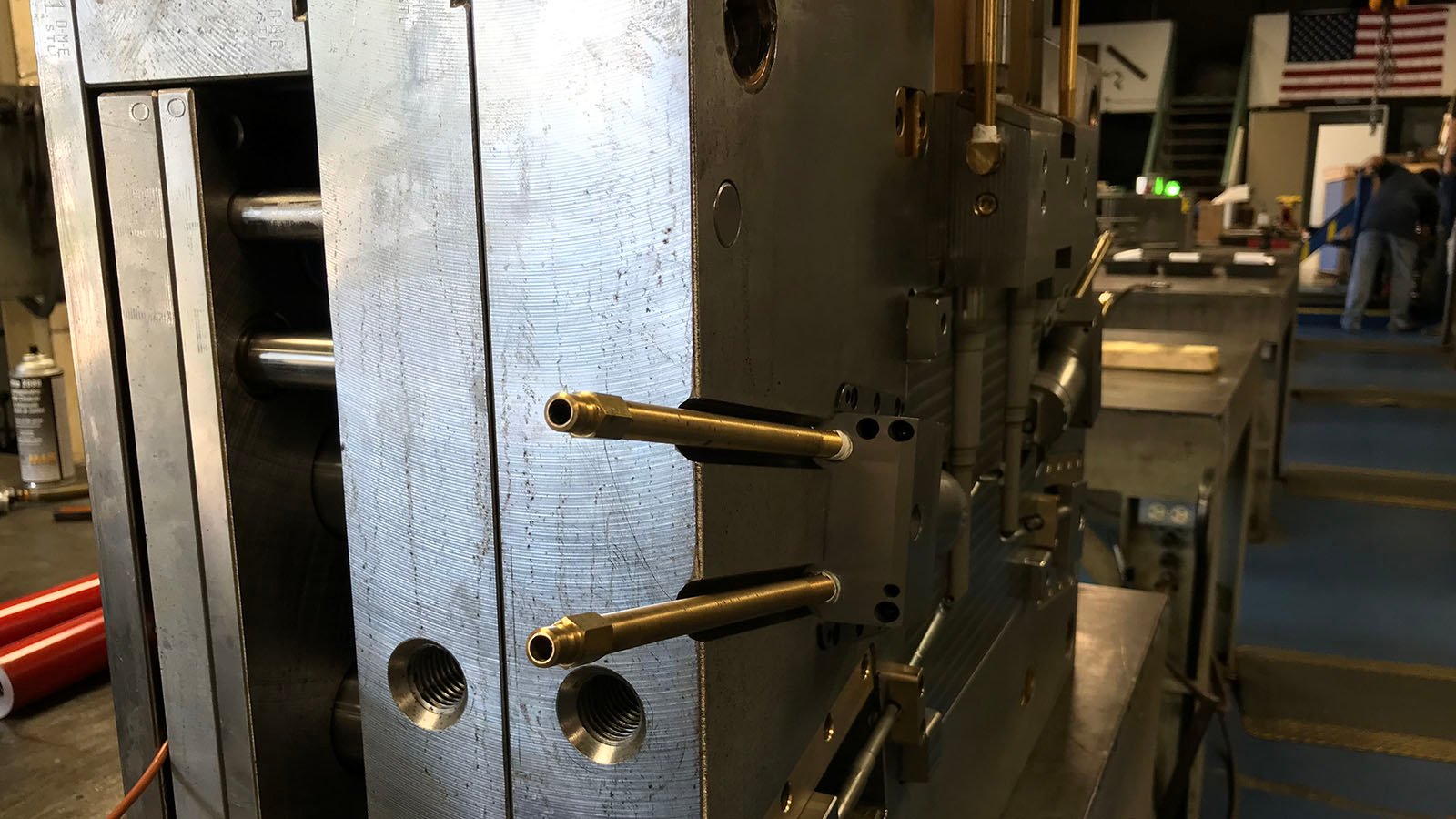When we first started designing and building molds at Basilius, it made sense for us to build nearly every mold component from scratch. However, over the last several decades, companies like DME and PCS have standardized mold bases, actions, and ejection systems. The standardization/specialization of manufacturing core components in high quantities soon made it inefficient for us to make those components ourselves. Though standardization may sound like a disadvantage to mold builders, in reality, it has increased design consistency and quality, decreased lead times, and helped us focus on the most critical design areas of the mold. Because of this efficiency gain, we now also standardize guided ejection systems for nearly every mold we build.
What is Guided Ejection?
A guided ejection system is a means of supporting the weight of the entire ejection system while it’s actuated by a molding machine or a hydraulic system. Depending on the size of the mold, the ejector system could weigh a few pounds or a few hundred pounds. Without a guided ejector system, that weight ends up mostly hanging off the return pins, which can wear them out or cause binding issues.
What’s the advantage?
The advantage of the guided ejection system is that the entire ejection system rides on a set of pins and bushings that keep everything perfectly aligned. Accurate alignment prevents binding and premature wear on return pins, knockout pins, tooling, and the mold frame. Proper alignment also allows the molding machine to actuate the ejection system easily without the resistance normally created by hanging weight.
Below is a cut away of a guided ejection system. You can see how the weight of the system is supported, while at the same time, it is able to move freely for part ejection.


